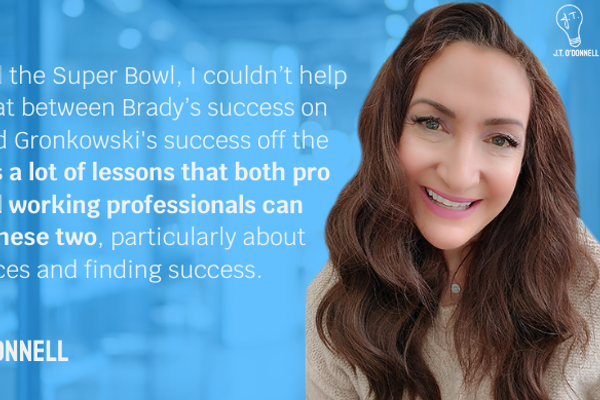
The job market is experiencing a recovery. Problem is, it is a really slow recovery. And a lot of industries just are not recovering at all. Experts believe that between 80-85% of open positions are not listed. Put these two together and it is more important than ever to adopt a more entrepreneurial approach to your career. It isn’t enough anymore to wait for a job to be advertised. The Internet is littered with amazing examples of people with the moxie to pitch themselves for a position that either doesn’t exist yet, or isn’t listed. If you're ready to take more ownership of your experience and job search, there are some ways to get there today.
6 Steps To Pitch Yourself For An Unlisted Job
Here are six steps to prepare and pitch yourself for an unlisted job:1. Define your brand
Before you can create a job for yourself, you need to know where you can add value and what you are in fact selling to an employer. To do this, you need to understand what your unique selling points (USP) are. I think it is easy to find your UPS when you have a good sense of your personal brand sweet spot. Personal branding sounds very lofty, but in fact, it is simply where your reputation, your aspirations and who you really are as a person and a professional intersect. Your unique selling points lie in this sweet spot. You need to be sure that the USP meets the criteria of aspiration, reality and perception. When you find your unique selling points, write the down. Be sure they are concise and easy to articulate, this will be handy in later steps. For me, I am an innovator who is passionate about creating great experiences for job seekers. So, what’s yours? Feel free to make a diagram like this for yourself; it will help define your USP.2. Prep your proof
Throughout your career, you have done work and made an impact that can effectively back up your unique selling points. If there are presentations, spreadsheets, documents, websites, research you have done, I recommend you store this work in the cloud. This will be valuable as you prepare your pitch to employer to show them what you’ve done. We are after all in the “show me” era. And the cloud is a great place to keep all this great work. Check out Google Drive, CredHive or Dropbox for some free cloud storage of your best work. These tools will also allow you to see your stories and skills in a visual way. Be sure you are only storing the work that backs up your unique selling points and personal brand so there is a consistency to your pitch.3. Figure out our ideal employer
It you are planning to pitch yourself for a position that doesn't exist or isn’t listed, you will need to focus this effort. Blanketing the internet with links to your work pitches is completely ill-advised. Focusing on no more than three companies at a time should be the goal. Use this short list as a social road map to learn everything you can about these employers. Research these employers on their websites as well as a sites like Glassdoor and Indeed. In your research, look closely at their messaging for cultural fit. There is no use pitching yourself for a job only to discover that the company is not aligned with your values. Understanding your fit and desire to be a long-term solution for the employer will help you decide if you should proceed to the next step.4. Get a “Masters in their problems”
When you’ve honed in on a few employers that are a cultural fit for you, you need to become a full-time student of these employers. You should follow each and every one of these companies on LinkedIn, Facebook, and Twitter. Try to find their Careers or Jobs accounts as well. Read everything you can about them. Learn about their leadership team. Learn about their challenges. Write them down.5. Find the gap
Network with current employees and continually read their public documents. Create a Google alert on the employer so that any news hits your feed immediately. Keep a dossier on these prospects and look for ways that your skills can answer their challenges. When you find the place in which your unique selling points fill a challenge that they are having, it is time to strike.6. Position yourself as the answer
Take stock of your existing online profiles. Do they reflect your unique selling points? Are you validating that you are the solution? Because when you pitch yourself as the answer to their problem, they are going to check to see that you can back it up. When you are pitching yourself as the answer, the best way to do this is in ways that executives can understand. They respond to results. In your pitch letter, presentationl, or emai you must show precisely how the creation of this role will make or save the company money. And then… you need to pitch that YOU are the person to do the making or saving of the money. Companies are always looking for talent who make an impact. It is important to focus your efforts. It takes time and effort, but your dream job is worth it.This post was originally published on an earlier date.
Disclosure: This post is sponsored by a CAREEREALISM-approved expert. You can learn more about expert posts here.
Photo Credit:















